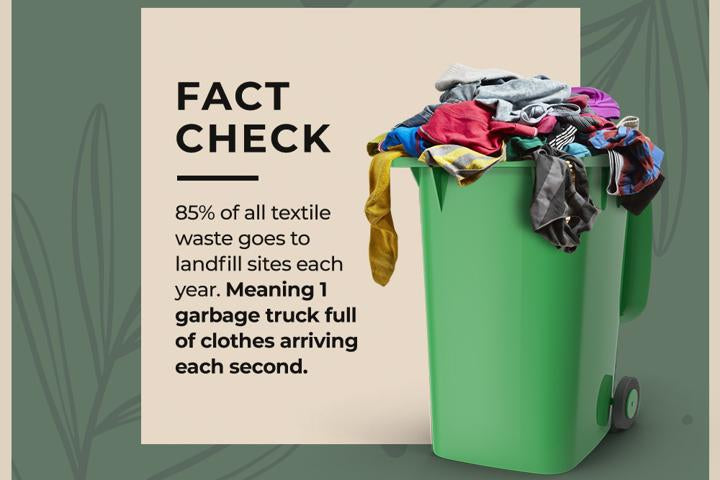Journal

Plastic pollution is one of the most pressing environmental threats of the 21st century. We are only now finding out about the impact of our widespread use of plastic and unsustainable synthetic fibres in nearly every aspect of our lives – and the information is worrying, to say the least.
Besides visible plastic pollution, such as plastic straws, fishing nets or water bottles, our ocean is being contaminated with microscopic plastic pollution too – microplastics – which may be even more dangerous.

The 21st century’s fashion industry isn’t exactly known for being particularly sustainable, but did you know that one of its biggest issues is the sheer amount of waste it produces?
According to a report released in 2017 by the Ellen McArthur Foundation, the equivalent of one garbage truck full of textiles goes to waste every second. The majority of this textile waste is sent to landfill and the rest is usually incinerated.

Most of us already know that we don’t wear every piece of clothing in our closets. In recent years, our wardrobes have expanded tremendously as garments became more affordable–thanks to fast fashion, but what impact does that have?
Recent research has found that half of an average person’s closet hasn’t been worn for a year or more. In the meantime, most of us remain unaware of this, thinking that we wear a much larger share of our collection than we do.

Our clothing production and consumption have significantly increased with the rise of fast fashion – but you may not believe, Business Insider reports that it has doubled since 2000! This is a massive change to happen in just 20 years.
We buy more clothing than ever before and keep it for a much shorter time, rotating the garments in our wardrobe and throwing them away to the detriment of the environment.

The raw materials of our clothes are one of the most significant contributors to the fashion industry’s overall environmental impact. Especially synthetic fibres, as the difference between the carbon footprint of natural fibres like cotton or linen and synthetic fibres such as polyester or nylon, is massive.
Did you know that producing polyester releases two to three times more carbon emission than cotton?



